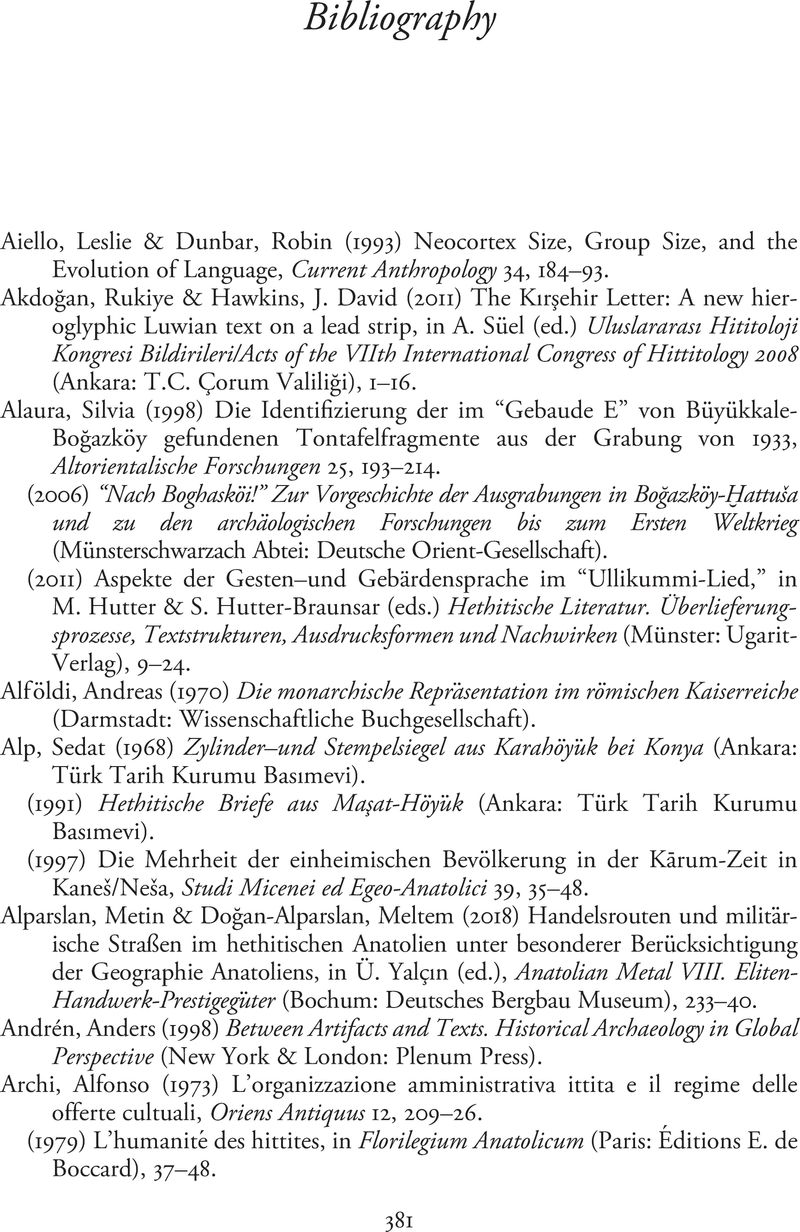Book contents
- A History of Hittite Literacy
- A History of Hittite Literacy
- Copyright page
- Dedication
- Contents
- Figures
- Tables
- Preface and Acknowledgments
- Map
- Timeline and Hittite Kings
- Sigla and Abbreviations
- Chapter 1 Introduction
- Chapter 2 Writing and Literacy among the Anatolians in the Old Assyrian Period
- Chapter 3 From Kanesh to Hattusa
- Chapter 4 First Writing in Hattusa
- Chapter 5 Literacy and Literature in the Old Kingdom until 1500 BC
- Chapter 6 The Emergence of Writing in Hittite
- Chapter 7 A Second Script
- Chapter 8 The New Kingdom Cuneiform Corpus
- Chapter 9 The New Kingdom Hieroglyphic Corpus
- Chapter 10 The Wooden Writing Boards
- Chapter 11 The Seal Impressions of the Westbau and Building D, and the Wooden Tablets
- Chapter 12 In the Hittite Chancellery and Tablet Collections
- Chapter 13 Scribes and Scholars
- Chapter 14 Excursus
- Chapter 15 The End and Looking Back
- Bibliography
- Index Locorum
- General Index
- References
Bibliography
Published online by Cambridge University Press: 18 December 2020
- A History of Hittite Literacy
- A History of Hittite Literacy
- Copyright page
- Dedication
- Contents
- Figures
- Tables
- Preface and Acknowledgments
- Map
- Timeline and Hittite Kings
- Sigla and Abbreviations
- Chapter 1 Introduction
- Chapter 2 Writing and Literacy among the Anatolians in the Old Assyrian Period
- Chapter 3 From Kanesh to Hattusa
- Chapter 4 First Writing in Hattusa
- Chapter 5 Literacy and Literature in the Old Kingdom until 1500 BC
- Chapter 6 The Emergence of Writing in Hittite
- Chapter 7 A Second Script
- Chapter 8 The New Kingdom Cuneiform Corpus
- Chapter 9 The New Kingdom Hieroglyphic Corpus
- Chapter 10 The Wooden Writing Boards
- Chapter 11 The Seal Impressions of the Westbau and Building D, and the Wooden Tablets
- Chapter 12 In the Hittite Chancellery and Tablet Collections
- Chapter 13 Scribes and Scholars
- Chapter 14 Excursus
- Chapter 15 The End and Looking Back
- Bibliography
- Index Locorum
- General Index
- References
Summary

- Type
- Chapter
- Information
- A History of Hittite LiteracyWriting and Reading in Late Bronze-Age Anatolia (1650–1200 BC), pp. 381 - 418Publisher: Cambridge University PressPrint publication year: 2021

